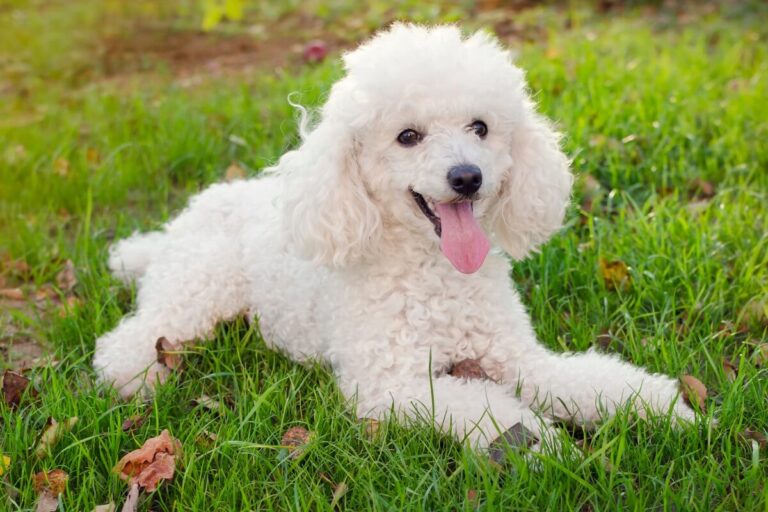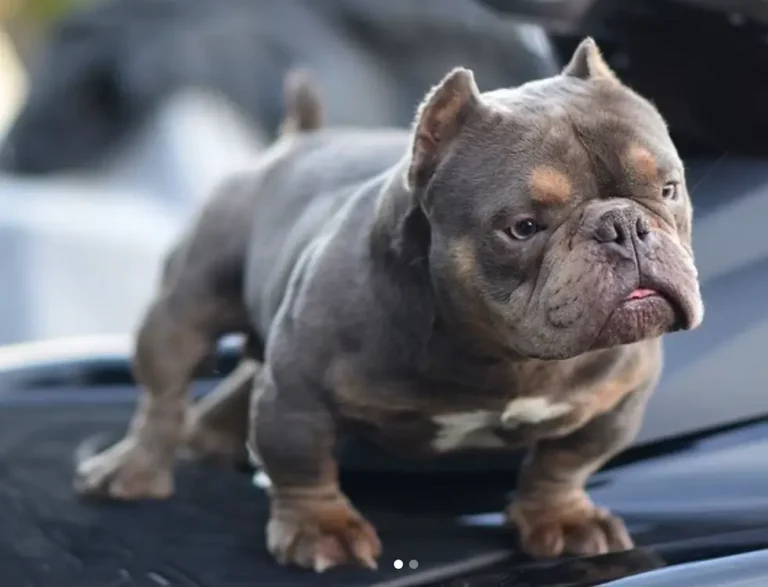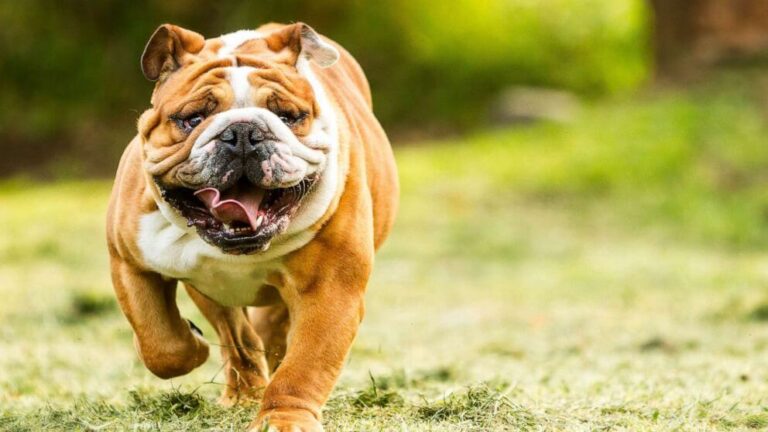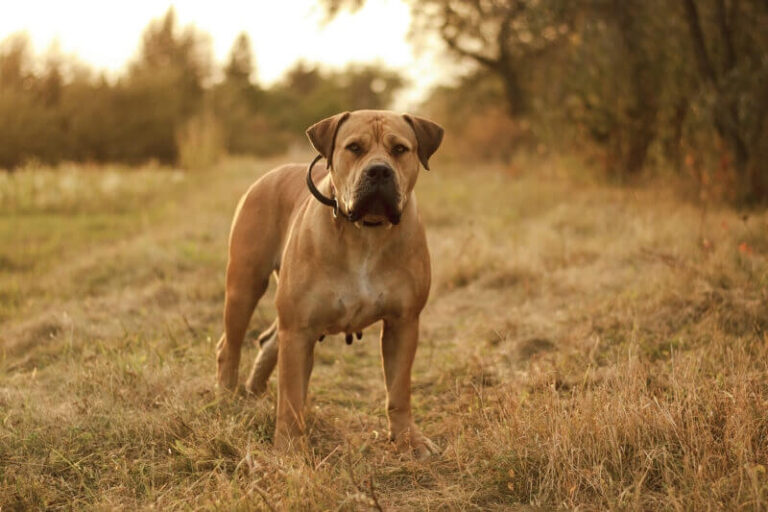Vizsla Dog Breed: Temperament, Care, and Health Guide
The Vizsla, often known as the “Velcro dog” due to its loyalty and affection towards its owners, is a breed that has captivated dog enthusiasts around the world. This elegant, medium-sized breed is not only known for its striking appearance but also its versatility and exceptional temperament. Originally bred as a hunting dog in Hungary, the Vizsla has evolved into a beloved companion that excels in various roles, from family pets to competitive sports participants.
Contents
- 1 History and Origin of the Vizsla
- 2 Physical Characteristics of the Vizsla
- 3 Temperament and Personality
- 4 Training and Socialization
- 5 Exercise and Activity Needs
- 6 Health and Lifespan
- 7 Diet and Nutrition
- 8 Grooming and Maintenance
- 9 Living Conditions and Environment
- 10 Vizsla as a Working Dog
- 11 Vizsla in Competitions and Sports
- 12 Adopting a Vizsla
- 12.1 Finding a Reputable Breeder
- 12.2 Adoption from Shelters and Rescues
- 12.3 Costs and Considerations
- 12.4 History and Origin of the Vizsla
- 12.5 Physical Characteristics of the Vizsla
- 12.6 Temperament and Personality
- 12.7 Training and Socialization
- 12.8 Exercise and Activity Needs
- 12.9 Health and Lifespan
- 12.10 Diet and Nutrition
- 12.11 Grooming and Maintenance
- 12.12 Living Conditions and Environment
- 12.13 Top FAQs About Vizsla Dogs
History and Origin of the Vizsla
The Hungarian Roots
The Vizsla’s history dates back to ancient Hungary, where the Magyar tribes developed the breed. These tribesmen prized the Vizsla for its prowess in hunting and tracking games, as well as its ability to serve as a loyal companion. The Vizsla’s ancestors were:
- Likely a mix of various hounds and pointers.
- Resulting in a breed that combines speed and agility.
- A keen nose.
Development Through the Ages
Throughout the centuries, the Vizsla has undergone several transformations. During the Turkish occupation of Hungary in the 16th century, the breed was influenced by the introduction of new dog breeds, further enhancing its hunting abilities. By the early 20th century, the Vizsla was well-established in Hungary. However, World War II posed a significant threat to the breed’s survival. Many Vizslas were smuggled out of the country to preserve the lineage, and the breed eventually found its way to the United States in the 1950s. Today, the Vizsla is recognized by major kennel clubs worldwide and continues to thrive both as a working dog and a family pet.
Physical Characteristics of the Vizsla
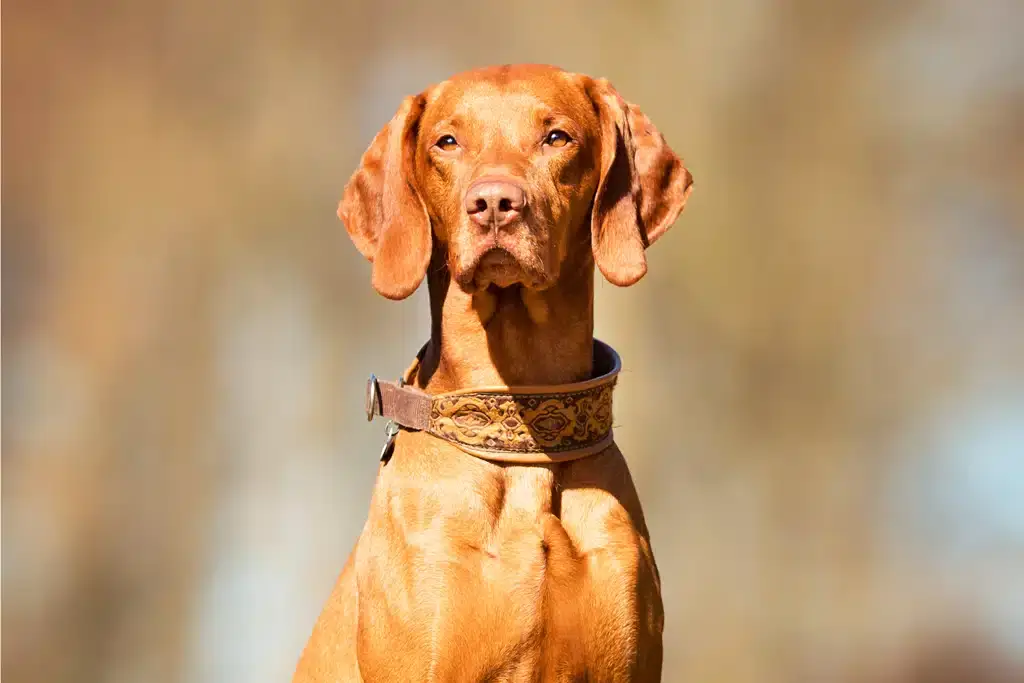
Size and Weight
Vizslas are medium-sized dogs, typically weighing between 45 to 65 pounds and standing about 21 to 24 inches tall at the shoulder. They possess a lean, muscular build that contributes to their agility and speed.
Coat and Color
The Vizsla’s coat is one of its most distinctive features. It is short, dense, and smooth, protecting the elements without requiring extensive grooming. The breed’s coat color ranges from golden rust to copper, giving the Vizsla its characteristic rich, reddish hue.
Distinctive Features
In addition to their coat, Vizslas have several other distinctive features. They have a noble, aristocratic appearance with a broad, chiselled head, expressive eyes that range from medium to dark brown, and long, velvety ears that frame their face. Their tails are typically docked to about two-thirds of their natural length, although this practice varies depending on regional regulations.
Temperament and Personality
General Temperament
Vizslas are known for their affectionate, gentle nature. They form strong bonds with their owners and thrive on human companionship. This breed is often referred to as a “Velcro dog” because it tends to stick close to its people. Vizslas are also highly intelligent and eager to please, making them relatively easy to train.
Interaction with Families
Vizslas make excellent family pets due to their friendly and outgoing personalities. They are good with children and can be quite playful and energetic. However, their high energy levels mean they require ample exercise and mental stimulation to prevent boredom and destructive behavior.
Behavior with Other Pets
With proper socialization, Vizslas generally get along well with other dogs and pets. Their hunting instincts may make them prone to chasing smaller animals, so early training and supervision are important when introducing them to other household pets.
Training and Socialization
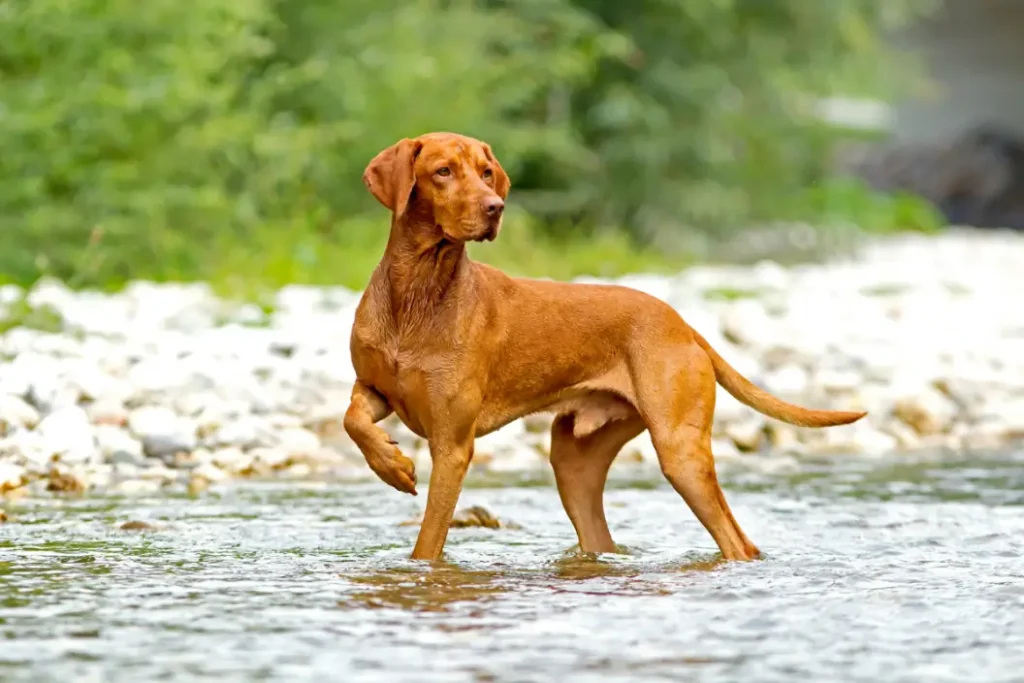
Importance of Early Training
Early training and socialization are crucial for Vizslas. As a sensitive and intelligent breed, they respond best to positive reinforcement techniques. Harsh training methods can lead to anxiety and behavioral issues.
Effective Training Techniques
Consistent, reward-based training methods work best with Vizslas. Commands should be clear and consistent, and training sessions should be kept short and engaging. Incorporating play and exercise into training can help keep the Vizsla focused and motivated.
Socialization Tips
Exposing Vizslas to a variety of people, places, and experiences from a young age is essential for developing a well-rounded dog. Puppy classes, playdates, and regular outings can help build confidence and reduce fearfulness in new situations.
Exercise and Activity Needs
Daily Exercise Requirements
Vizslas are high-energy dogs that require substantial daily exercise. They thrive in active households where they can participate in activities like running, hiking, and playing fetch. A minimum of one to two hours of vigorous exercise per day is recommended.
Ideal Activities for Vizslas
Due to their versatility, Vizslas excel in various activities, including agility, obedience, and field trials. They also enjoy swimming and retrieving games, which cater to their instincts.
Mental Stimulation
In addition to physical exercise, Vizslas need mental stimulation to stay happy and healthy. Puzzle toys, interactive games, and training sessions can help keep their minds sharp and prevent boredom.
Health and Lifespan
Common Health Issues
Vizslas are generally healthy dogs, but like all breeds, they are prone to certain health conditions. Common issues include hip dysplasia, epilepsy, and various eye disorders. Regular veterinary check-ups and health screenings can help detect and manage these conditions early.
Lifespan Expectations
The average lifespan of a Vizsla is around 12 to 14 years. Providing a balanced diet, regular exercise, and routine veterinary care can contribute to a long, healthy life.
Preventative Health Care
Preventative health care is key to maintaining Vizsla’s well-being. This includes regular vaccinations, parasite control, dental care, and maintaining a healthy weight through proper diet and exercise.
Diet and Nutrition
Nutritional Requirements
Vizslas require a balanced diet that provides all essential nutrients. High-quality commercial dog food formulated for active breeds is a good option. Owners can also opt for a raw or home-cooked diet with guidance from a veterinarian.
Recommended Diet Plans
A diet rich in protein, healthy fats, and complex carbohydrates is ideal for Vizslas. Meals should be divided into two portions per day to prevent bloat, a condition to which they are susceptible.
Foods to Avoid
Certain foods should be avoided to ensure Vizsla’s health. These include chocolate, grapes, raisins, onions, garlic, and foods high in fat or sugar. Always consult with a veterinarian before making significant changes to your dog’s diet.
Grooming and Maintenance
Coat Care
The Vizsla’s short coat requires minimal grooming. Regular brushing with a soft-bristle brush or grooming mitt can help remove loose hair and keep the coat shiny. Bathing should be done as needed, typically every few months.
Nail, Teeth, and Ear Care
Routine maintenance is important for Vizsla’s overall health. Nails should be trimmed regularly to prevent overgrowth and splitting. Dental hygiene can be maintained through regular brushing and dental chews. Ears should be checked and cleaned periodically to prevent infections.
Seasonal Grooming Tips
During shedding seasons, more frequent brushing may be necessary to manage loose hair. Regular grooming sessions also provide an opportunity to check for skin issues or parasites.
Living Conditions and Environment
Suitable Living Arrangements
Vizslas are adaptable dogs, but they do best in homes where they have plenty of space to move and play. They can live in apartments if they receive enough exercise, but ideally, they should have access to a yard.
Adaptability to Different Climates
Vizslas are generally adaptable to various climates but may need extra protection in extreme weather. In colder climates, a dog coat can help keep them warm, while in hot climates, ensuring they have access to shade and water is essential.
Indoor vs. Outdoor Living
While Vizslas enjoy outdoor activities, they should not be left outside for extended periods. They thrive on human interaction and should be kept indoors with their family when not exercising.
Vizsla as a Working Dog
Hunting and Field Trials
Historically bred for hunting, Vizslas excel in field trials and hunting activities. Their keen sense of smell, agility, and endurance make them excellent partners in hunting upland game birds and small mammals.
Roles in Search and Rescue
Vizslas are also used in search and rescue operations due to their strong noses and determination. Their ability to work in various environments makes them valuable assets in locating missing persons.
Therapy and Service Dogs
Their gentle nature and strong bond with humans make Vizslas suitable for therapy and service work. They can provide emotional support, assist individuals with disabilities, and participate in therapy sessions in hospitals and nursing homes.
Vizsla in Competitions and Sports
Participation in Dog Sports
Vizslas are competitive and excel in dog sports such as agility, obedience, rallying, and tracking. These activities provide excellent outlets for their energy and intelligence.
Training for Competitions
Training for competitions requires consistent practice and a positive approach. Vizslas thrive in environments where they can learn new skills and receive regular feedback from their handlers.
Notable Achievements
The Vizsla breed has achieved numerous accolades in various competitive arenas. Notably, Vizslas have earned titles in field trials, agility, and obedience, showcasing their versatility and dedication.
Adopting a Vizsla
Finding a Reputable Breeder
When looking to adopt a Vizsla, it is important to find a reputable breeder who prioritizes health and temperament. Potential owners should ask about health clearances, meet the puppy’s parents, and inquire about the breeder’s experience with the breed.
Adoption from Shelters and Rescues
Adopting shelters and breed-specific rescues is another option. Many Vizslas in need of homes are waiting for loving families. Rescues often provide thorough evaluations and may offer support in transitioning the dog to a new home.
Costs and Considerations
Owning a Vizsla involves various costs, including food, veterinary care,### Introduction to the Vizsla Dog Breed.
The Vizsla, often affectionately known as the “Velcro dog,” is renowned for its loyalty, affection, and versatility. This medium-sized, athletic breed hails from Hungary, where it was initially developed as a hunting dog. Today, Vizslas are celebrated not only for their hunting prowess but also as excellent family companions and competitive sports participants.
History and Origin of the Vizsla
The Hungarian Roots
The Vizsla’s history stretches back to ancient Hungary, where the Magyar tribes developed the breed. These early hunters valued the Vizsla for its exceptional tracking and hunting skills, as well as its ability to be a faithful companion. The breed’s ancestors are believed to be a mix of various hounds and pointers, culminating in a dog with remarkable speed, agility, and a keen sense of smell.
Development Through the Ages
During the 16th century, the Vizsla was influenced by breeds introduced during the Turkish occupation of Hungary, enhancing its hunting abilities. By the early 20th century, the Vizsla was well-established, but World War II posed a significant threat to its survival. Many Vizslas were smuggled out of Hungary to preserve the breed, eventually making their way to the United States in the 1950s. Today, the Vizsla is recognized by major kennel clubs and continues to thrive as a versatile working dog and beloved pet.
Physical Characteristics of the Vizsla
Size and Weight
Vizslas are medium-sized dogs, typically weighing between 45 to 65 pounds and standing 21 to 24 inches tall at the shoulder. Their lean, muscular build contributes to their agility and speed.
Coat and Color
One of the Vizsla’s most distinctive features is its short, dense, and smooth coat, which offers protection without requiring extensive grooming. The coat color ranges from golden rust to copper, giving the Vizsla its characteristic rich, reddish hue.
Distinctive Features
Vizslas have a noble appearance with a broad, chiselled head, expressive brown eyes, and long, velvety ears that frame their face. Their tails are typically docked to about two-thirds of their natural length, although this practice varies by region.
Temperament and Personality
General Temperament
Vizslas are known for their affectionate, gentle nature. They form strong bonds with their owners and thrive on human companionship, earning the nickname “Velcro dog.” They are also highly intelligent and eager to please, making them relatively easy to train.
Interaction with Families
Vizslas make excellent family pets due to their friendly and outgoing personalities. They are good with children and can be quite playful and energetic. However, their high energy levels mean they require ample exercise and mental stimulation to prevent boredom and destructive behavior.
Behavior with Other Pets
With proper socialization, Vizslas generally get along well with other dogs and pets. Their hunting instincts may make them prone to chasing smaller animals, so early training and supervision are important.
Training and Socialization
Importance of Early Training
Early training and socialization are crucial for Vizslas. As a sensitive and intelligent breed, they respond best to positive reinforcement techniques. Harsh training methods can lead to anxiety and behavioral issues.
Effective Training Techniques
Consistent, reward-based training methods work best with Vizslas. Commands should be clear and consistent, and training sessions should be kept short and engaging. Incorporating play and exercise into training can help keep the Vizsla focused and motivated.
Socialization Tips
Exposing Vizslas to a variety of people, places, and experiences from a young age is essential for developing a well-rounded dog. Puppy classes, playdates, and regular outings can help build confidence and reduce fearfulness in new situations.
Exercise and Activity Needs
Daily Exercise Requirements
Vizslas are high-energy dogs that require substantial daily exercise. They thrive in active households where they can participate in activities like running, hiking, and playing fetch. A minimum of one to two hours of vigorous exercise per day is recommended.
Ideal Activities for Vizslas
Due to their versatility, Vizslas excel in various activities, including agility, obedience, and field trials. They also enjoy swimming and retrieving games, which cater to their instincts.
Mental Stimulation
In addition to physical exercise, Vizslas need mental stimulation to stay happy and healthy. Puzzle toys, interactive games, and training sessions can help keep their minds sharp and prevent boredom.
Health and Lifespan
Common Health Issues
Vizslas are generally healthy dogs, but like all breeds, they are prone to certain health conditions. Common issues include hip dysplasia, epilepsy, and various eye disorders. Regular veterinary check-ups and health screenings can help detect and manage these conditions early.
Lifespan Expectations
The average lifespan of a Vizsla is around 12 to 14 years. Providing a balanced diet, regular exercise, and routine veterinary care can contribute to a long, healthy life.
Preventative Health Care
Preventative health care is key to maintaining Vizsla’s well-being. This includes regular vaccinations, parasite control, dental care, and maintaining a healthy weight through proper diet and exercise.
Diet and Nutrition
Nutritional Requirements
Vizslas require a balanced diet that provides all essential nutrients. High-quality commercial dog food formulated for active breeds is a good option. Owners can also opt for a raw or home-cooked diet with guidance from a veterinarian.
Recommended Diet Plans
A diet rich in protein, healthy fats, and complex carbohydrates is ideal for Vizslas. Meals should be divided into two portions per day to prevent bloat, a condition to which they are susceptible.
Foods to Avoid
Certain foods should be avoided to ensure Vizsla’s health. These include chocolate, grapes, raisins, onions, garlic, and foods high in fat or sugar. Always consult with a veterinarian before making significant changes to your dog’s diet.
Grooming and Maintenance
Coat Care
The Vizsla’s short coat requires minimal grooming. Regular brushing with a soft-bristle brush or grooming mitt can help remove loose hair and keep the coat shiny. Bathing should be done as needed, typically every few months.
Nail, Teeth, and Ear Care
Routine maintenance is important for Vizsla’s overall health. Nails should be trimmed regularly to prevent overgrowth and splitting. Dental hygiene can be maintained through regular brushing and dental chews. Ears should be checked and cleaned periodically to prevent infections.
Seasonal Grooming Tips
During shedding seasons, more frequent brushing may be necessary to manage loose hair. Regular grooming sessions also provide an opportunity to check for skin issues or parasites.
Living Conditions and Environment
Suitable Living Arrangements
Vizslas are adaptable dogs, but they do best in homes where they have plenty of space to move and play. They can live in apartments if they receive enough exercise, but ideally, they should have access to a yard.
Adaptability to Different Climates
Vizslas are generally adaptable to various climates but may need extra protection in extreme weather. In colder climates, a dog coat can help keep them warm, while in hot climates, ensuring they have access to shade and water is essential.
Indoor vs. Outdoor Living
While Vizslas enjoy outdoor activities, they should not be left outside for extended periods. They thrive on human interaction and should be kept indoors with their family when not exercising.
Related: Basset Hound Dog Breed
Top FAQs About Vizsla Dogs
What are the key characteristics of a Vizsla’s temperament?
Vizslas are known for their affectionate and friendly nature. They form strong bonds with their families and are often referred to as “Velcro dogs” because they like to stay close to their owners. They are energetic and intelligent and require plenty of exercise and mental stimulation. Proper socialization and training are essential to help them develop into well-behaved adult dogs.
How much exercise does a Vizsla need?
Vizslas are high-energy dogs that need a significant amount of exercise. They thrive on activities that challenge both their physical and mental capabilities. A minimum of one to two hours of vigorous exercise daily is recommended. This can include running, hiking, playing fetch, and participating in dog sports like agility and obedience trials. Without adequate training, Vizslas can become bored and potentially develop destructive behaviors.
What are some common health issues in Vizslas?
While generally healthy, Vizslas can be prone to certain health conditions. Common issues include hip dysplasia, epilepsy, hypothyroidism, and various eye disorders. It’s important to obtain a Vizsla from a reputable breeder who conducts health screenings on their breeding stock. Regular veterinary check-ups and preventative care are crucial to maintaining a Vizsla’s health and well-being.
What is the lifespan of a Vizsla, and how can I ensure they live a long and healthy life?
The average lifespan of a Vizsla is around 12 to 14 years. To ensure a long and healthy life, it’s important to provide a balanced diet, regular exercise, and routine veterinary care. Regular health screenings, vaccinations, dental care, and maintaining a healthy weight are all part of comprehensive care. Early detection and management of health issues can also contribute to a longer, healthier life.
Are Vizslas good with children and other pets?
Vizslas are generally good with children and can make excellent family pets. They are playful and gentle, making them great companions for kids. However, due to their high energy levels, they should be supervised around small children to prevent accidental knocking over. With proper socialization, Vizslas can also get along well with other dogs and pets. Early socialization helps them learn how to interact appropriately with other animals and people.
- Golden Retriever Pros and Cons: What Every Pet Parent Should Know - 15 September 2025
- Cane Corso Dog Breed: Health, Care, and Lifespan - 14 September 2025
- Catahoula Leopard Dogs: Description, Temperament, Lifespan, & Facts - 21 July 2025


